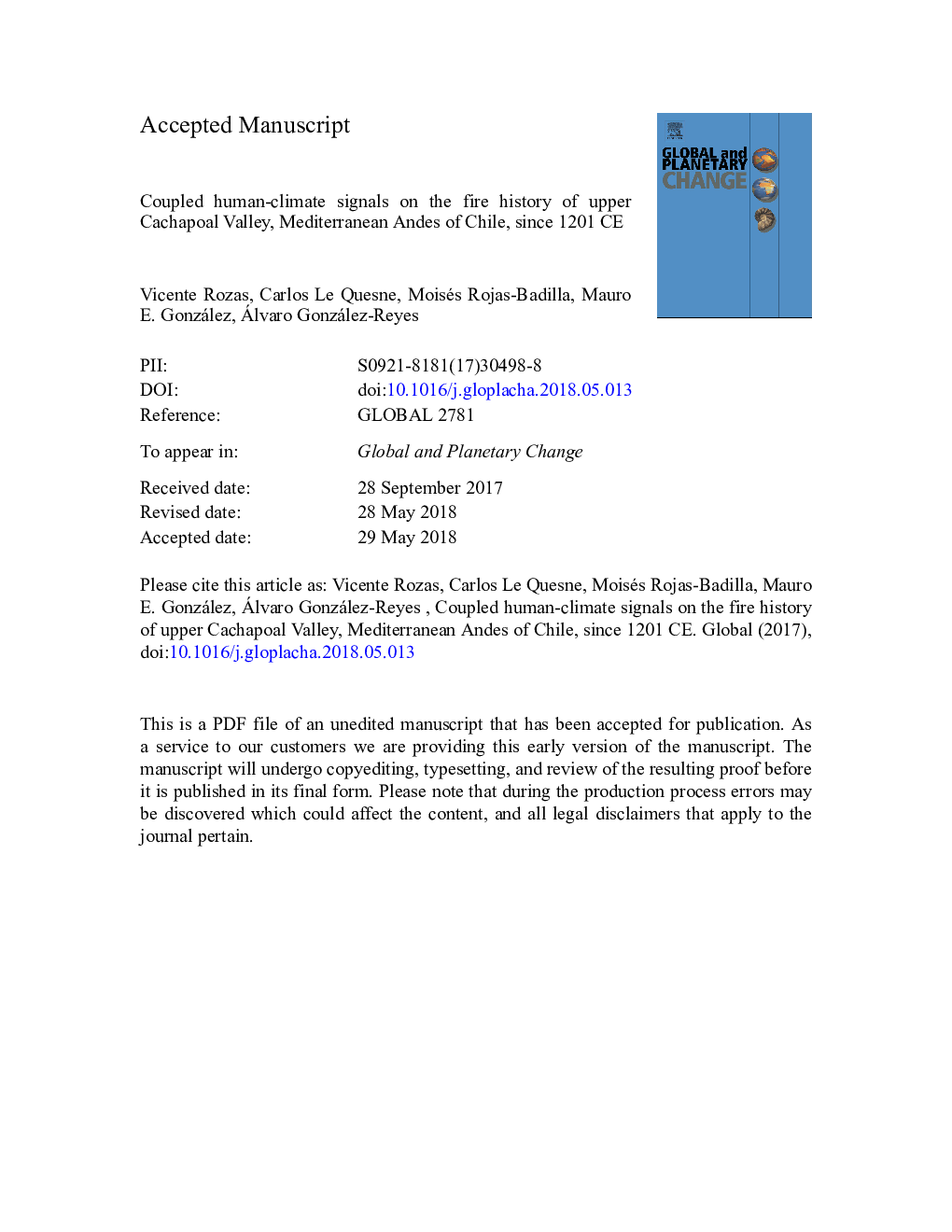| کد مقاله | کد نشریه | سال انتشار | مقاله انگلیسی | نسخه تمام متن |
|---|---|---|---|---|
| 8867492 | 1621615 | 2018 | 43 صفحه PDF | دانلود رایگان |
عنوان انگلیسی مقاله ISI
Coupled human-climate signals on the fire history of upper Cachapoal Valley, Mediterranean Andes of Chile, since 1201 CE
دانلود مقاله + سفارش ترجمه
دانلود مقاله ISI انگلیسی
رایگان برای ایرانیان
کلمات کلیدی
موضوعات مرتبط
مهندسی و علوم پایه
علوم زمین و سیارات
فرآیندهای سطح زمین
پیش نمایش صفحه اول مقاله

چکیده انگلیسی
The long-term history of fire regimes in the Mediterranean Andes of Chile is almost unknown. Subalpine woodlands of Austrocedrus chilensis include long-lived trees resilient to low-intensity fires, which can provide valuable tree-ring-based information about fire history. In this work, we performed an annually resolved multicentury reconstruction of past fires from fire-scar records identified in relict Austrocedrus wood found on steep highly-eroded and rocky slopes with coarser fuel structure in the upper Cachapoal Valley, central Andes of Chile. We compared this fire record with historical land-use changes and extensive reconstructions of regional precipitation and temperature, as well as large-scale climatic patterns. The highest fire frequencies were recorded in the Spanish settlement period (1541-1750), when land-clearing activities, cattle ranching, agriculture, and mining practices became widespread after the Spanish conquest. At an interannual time scale, fire occurrence and precipitation were unconnected during the Spanish settlement. By contrast, in the indigenous period (1200-1540), under the influence of the aboriginal Chiquillanes people, fires occurred in wet years with high vegetation productivity. In the livestock grazing period (1751-1950), when large cattle ranches were established, fires occurred in dry years after a wet year. Fires in this period were likely ignited under conditions of high fuel flammability to improve plant production and promote intensive livestock grazing. At a multidecadal time scale, fires were more frequent in cold periods throughout the whole record. These findings suggest that herbaceous fuel accumulation and flammability, modulated by climate variation and human land uses, were the main factors promoting fires spread in this Mediterranean subalpine area. Our research emphasizes the importance of relict Austrocedrus wood for fire history reconstruction and expands knowledge about fire regime shifts over the past eight centuries in southern South America.
ناشر
Database: Elsevier - ScienceDirect (ساینس دایرکت)
Journal: Global and Planetary Change - Volume 167, August 2018, Pages 137-147
Journal: Global and Planetary Change - Volume 167, August 2018, Pages 137-147
نویسندگان
Vicente Rozas, Carlos Le Quesne, Moisés Rojas-Badilla, Mauro E. González, Álvaro González-Reyes,